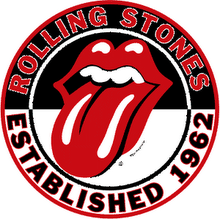The making of EXILE ON MAIN ST.
By Robert Greenfield
In the spring of 1971, the Rolling Stones, the number one outlaw band in the world, were forced for tax reasons to leave England and go into exile in the South of France. Along with his companion, the very glamorous Anita Pallenberg, and their young son Marlon (named after the actor Marlon Brando), Keith Richards set up housekeeping in a sumptuous white mansion overlooking the sparkling blue Mediterranean.
Over the course of the next six months as the Stones recorded their landmark double album Exile On Main St. in the basement of Villa Nellcôte, an international cast of rock musicians, artists, writers, dope dealers and jet set hangers-on came and went, joining a party which never ended in a house which soon became ground zero for the hip universe, circa 1971.
At Villa Nellcôte, at least for a little while, no wish was too extreme. Anything seemed possible and twenty-two for lunch was never out of the question. If no one actually seemed to have a last name or really do very much to earn a living, so be it. This was life on the grand scale, meant to be lived as though some unseen movie camera was perpetually whirring just beyond the frame of a shared reality which never was in doubt.
With the Shirelles playing loudly in the background and all dialogue by Noel Coward and William Burroughs, the mise-en-scène was straight out of F. Scott Fitzgerald's Tender Is The Night. Keith and Anita were the Dick and Nicole Diver of rock. They were the real life reincarnation of Gerald and Sara Murphy, the Jazz Age couple upon whom Fitzgerald had based his characters.
Although no one knew it then, Keith and Anita were also the prototype for all the great self-destructive rock couples to follow - Sid and Nancy, Kurt and Courtney, and yes, even Pamela and Tommy Lee. Keith, he played in a rock 'n' roll band and Anita, she was a movie star queen. Both then and now, no more need be said. Even today, the original is still the greatest.
As Gerald Murphy himself once noted, living well may in fact be the best revenge. At Villa Nellcôte, no one ever bothered to get up early. Sleep was for all the little people down the hill. At Villa Nellcôte, careers were made and lives ruined. Marriages fell apart and brand new relationships began. Hand in hand through the villa's marble halls at night, the ghost of Brian Jones, founder of the Rolling Stones, then dead for just two short years, walked with the spirit of Gram Parsons, Keith's brilliant songwriter friend who in a few short years would himself be dead.
Having only just arguably recorded the three best albums in rock back-to-back-to-back (Beggars Banquet, Let It Bleed and Sticky Fingers), the Rolling Stones went to work in the blazing summer heat of the French Riviera on the double album which has come to be hailed as their great masterpiece.
The acute sense of dislocation which lies at the core of Exile On Main St. accurately reflects a moment in time when even the Rolling Stones were forced to recognize that they were indeed strangers in a very strange land. Working conditions at the villa were primitive and hellish. Night after night, the Stones descended like coal miners in Wales into the basement to record and re-record tracks which Mick and Keith had sometimes only just written. The very next night, they went back down to do it all over again. The fine line between ecstasy and addiction, not to mention also the one separating creativity from madness, was breached so often on a nightly basis at Villa Nellcôte that by the time the sun came up on yet another day, it was no longer possible to tell one from the other.
Soon enough, it became clear to one and all that the high black iron gates of the villa, initially built to keep out the rabble, were now there to keep everyone inside Nellcôte until the album was done. Exile On Main St., which continues to be the defining record of its time, is now joined by Exile, a brilliant collection of remarkable photographs by Dominique Tarlé, who lived for months at the villa yet somehow managed to survive to tell the tale.
In Exile, all the most significant figures from Villa Nellcôte tell for the first time the behind-the-scenes story of a moment in popular culture which will not come again. Never before has the making of a landmark rock album been documented so thoroughly. A signal accomplishment in the history of rock photography, Exile also contains the first full, unexpurgated version of the August, 1971 Rolling Stone interview I conducted with Keith Richards at Villa Nellcôte. Along with a never before published memoir of my time of service at Nellcôte, Exile also features "Goodbye, Great Britain", my account of the Stones' farewell tour of England as well as the report I filed from Los Angeles a year later on the release of the album as the Stones began their historic 1972 tour of America.
A priceless and unique document, Exile vividly portrays a turning point in time when rock was still a lifestyle and a vocation rather than an industry. Those who lived at Villa Nellcôte were not there for the money but for the music. That the music itself was more than enough to sustain them can be seen on every page of Exile. In order to relive that time, simply slip the Stones' double album on the turntable, open the pages of Exile, and remember what it was like to be an exile on main street in a world which will never come again.

